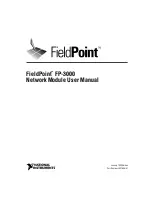
Appendix B - SonicWALL Global VPN Client Installation Using the InstallShield Silent Response File Page 47
Troubleshooting the deafult.rcf File
.
Appendix B - SonicWALL Global VPN Client Installation Using
the InstallShield Silent Response File
A normal (non-silent) installation of the SonicWALL Global VPN Client receives the necessary input from
the user in the form of responses to dialog boxes. However, a silent installation does not prompt the user
for input. A silent installation must get its user input from a different source. That source is the InstallShield
Silent Response File (.iss file). This response file contains the information that an end user would enter
as responses to dialog boxes when running a normal setup. A silent setup reads the necessary input from
the response file at run time. The following instructions explain how to create and execute a silent
installation of the SonicWALL Global VPN Client.
Creating the Silent Installation
The format of response files resembles that of an .ini file, but the response file has an .iss extensions. A
response file is a plain text file consisting of sections containing data entries. To create a response file,
simply run the setup with the
-r
command line parameter:
Setup.exe –r
Setup records all your installation choices in
Setup.iss
and places the file in the Windows folder. To use
this response file in a normal installation, copy it into the default install location (normally Disk1 or the
same folder as Setup.ins).
Table 2: Troubleshooting the default.rcf File
Issue
Solution
If there are any incorrect entries or typos in your
default.rcf
file, the settings in the
default.rcf
file will
not be incorporated into the Global VPN Client, and no
connection profiles will appear in the Global VPN Client
window. The error message
Failed to parse
configuration <file>
will appear in the Global VPN
Client Log Viewer, or the following error message will
be displayed when attempting to import the file: “
Could
not import the specified configuration file. The file
appears to be corrupt.”
Ensure that the file does not contain any non-ASCII
characters. The
SonicWALL Global VPN
Client.rcf
file created by the
default.rcf
file must
be deleted from the
\
directory and the
default.rcf
file edited to correct the errors.
The
default.rcf
file cannot have an attribute of READ
Only.
The
SonicWALL Global VPN Client.rcf
file
created by the
default.rcf
file must be deleted from
the
\
directory and the
default.rcf
file Read Only
attribute removed to correct the error.
The Peer Name, <Default Gateway> displays the
following error message when attempting to connect:
“
Failed to convert the Peer name <Default
Gateway> to an IP address”
.
When setting the Peer Name to the special case of
<Default Gateway>, the tag for
<UseDefaultGWAsPeerIP>
must be set to
1
. The
SonicWALL Global VPN Client.rcf
file created by
the
default.rcf
file must be deleted from the
\
directory.
















































